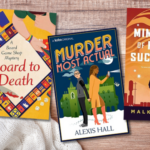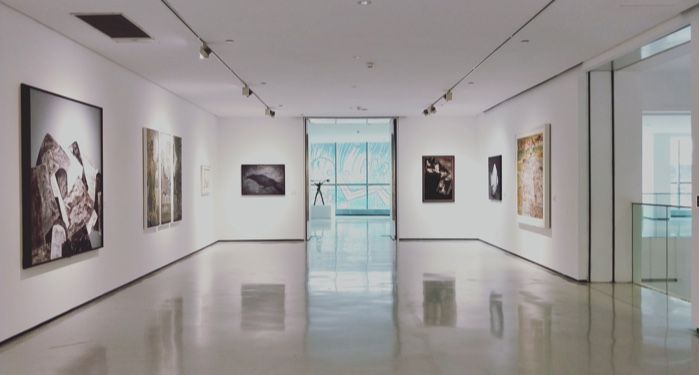
11 of the Best Art History Books
Despite what you may have heard about Art History being a frivolous course of study, it’s much more than just memorizing the names and dates of paintings. At its core, Art History is a dynamic field which ties together skills in history, criticism, anthropology, architecture, sociology, linguistics, economics, chemistry, and so on, all through the lens of art. Art historians don’t just end up as curators in museums (which are highly competitive positions). They can end up as artists, conservationists, critics, or involved in law, geopolitics, and social justice.
Some of us even end up writing for Book Riot.
If you’re interested in exploring art history as a potential field or hobby, we’ve rounded some of the best art history books for you to get started. We’ve split this up into three sections: Survey, Art Criticism and Analysis, and Biographies.
Survey Art History Books
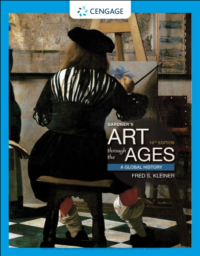
Gardner’s Art Through The Ages: A Global History by Fred S. Kleiner
If you’ve ever had an art history class, chances are you’ve had to read through a Gardner’s book. Packing the whole human history of art into one or two texts is no easy feat, but this text’s accessibility and broad swath of work really makes it one of the best nonfiction art history books. The Global History is currently on its 16th edition, but there are a variety of Gardner books, some which come in multiple volumes or with specializations. Because it’s commonly used in colleges, it’s very easy to find discounted at a second-hand seller or college used bookstore. Many of these are written or edited by scholars who have articles and other works available digitally or through journals, which we encourage you to explore.
Art Beyond the West by Michael Kampen-O’Riley, PhD
Pearson Books are also heavily utilized in most 101 courses. Art Beyond the West (1) has to do some heavy lifting, trying to cram the entire history of art from Africa, Asia, the Middle East, the Pacific Islands, the Caribbean, and from the Americas into just a few hundred pages. Unfortunately, like most textbooks, this work on art by non-white people is written by someone outside of that heritage (2). But if you’re someone with no idea of what art from non-Eurocentric places is, this is a good survey.
Art History Book 1: Ancient Art: Portable Edition by Marilyn Stokstad and Michael W. Cothren
While a global study book like Gardner’s will touch on ancient art, it’s usually the bookend areas of art history (ancient and contemporary) that get glossed over in most survey scenarios and courses. But ancient art history is fascinating! Also having a sense about ancient art sets a good foundation for understanding art in general. Like most Pearson textbooks, Ancient Art is broad and accessible, making it one of those really essential books about art history.
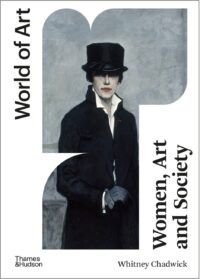
Women, Art, and Society by Whitney Chadwick
If you’re looking for a short, dense work on how women have been both the authors and objects of art, Dr. Chadwick has you covered. This work is clear and concise, and it’s a great overall summary of Western art too! Chadwick does a great job of describing how changing social standards and politics affected how women made art and how they were simultaneously portrayed in art. She skillfully uses individual biographies to illustrate how these shifts occurred and their effects. It’s also tremendously accessible, which is very necessary to democratize the study of art history.
Art Criticism and Analysis
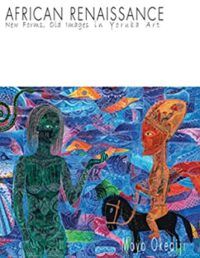
African Renaissance: Old Forms, New Images in Yoruba Art by Moyo Okediji
African Renaissance is very good primer on one of the largest art diasporas. Dr. Okediji tracks the history of Yoruba art from Western Africa, up through enslavement and modern art. African Renaissance explores the modality and portability of art forms and motifs as they change or are forced to adapt to terrible circumstances. Okediji is perhaps the foremost expert on Yoruba art diaspora, and we would also recommend his other works such as The Shattered Gourd, should it go on sale.
Immanent Vitalities: Meaning and Materiality in Modern and Contemporary Art by Kaira Cabañas
Is this a particularly easy read? No. But it is immensely interesting and thought provoking. Dr. Cabañas’s work is a great example of how art historians can interweave multiple areas, histories, and theories to explore art and innovation. Her predominant area of study is modernism, surrealism, and Latin American arts. Immanent Vitalities is a great discussion on power and art, and if you’re into the more modern South American art scene or avant-garde work, this might be for you.
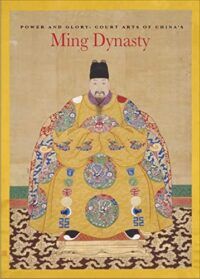
Power and Glory: Court Arts of China’s Ming Dynasty by He Li and Michael Knight
Let’s talk about catalog books. Sometimes during specific exhibitions or conferences, or for certain areas of study, a catalog book may be created. These sorts of texts tend to be more focused on displaying the art for study and less text-intensive than many other works. Even if they sometimes look like (or are!) coffee table books, these works often include more in-depth analysis of specific works or periods featured. These are still a wealth of knowledge, and Power and Glory is a great example of that. China has a long and varied art history, but focusing on one period like the Ming dynasty can allow art historians to appreciate the art and unpack its impact. Sometimes the close study of a select piece or two is more informative than a broad discussion on centuries of work.
Boundaries by Maya Lin
This verbal sketchbook is less a critical discussion, and more of a look at how an artist sees their work and how they want to construct their work. Maya Lin is the designer behind the Vietnam Veterans Memorial and Civil Rights Memorial, and who continues to create striking public sculptures. This “journal” explores how she approaches art making. It’s insightful, beautiful, and a great read for artists and art critics alike.
Art History Biographies
The Diary of Frida Kahlo: An Intimate Self-Portrait by Carlos Fuentes
The Diary is a combination biography and facsimile of Kahlo’s own journals. Fuentes offers translations and full images from her own sketchbook and diary. He provides commentary and contextualizes her art and life within her own pages. The result is a controversial, but illuminating look at the artist’s life through her own eyes and through that of a historian’s.
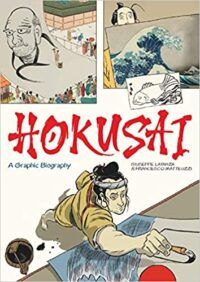
Hokusai: A Graphic Biography by Giuseppe Lantazi and Francesco Matteuzzi
Katsushika Hokusai’s vibrant life comes out in this graphic novel interpretation. Lantazi and Matteuzzi pay homage to this artist’s own print-block style throughout while still modernizing his prolific life for modern readers. It’s a great look at the artist behind one of the most iconic Japanese works of all time.
Seeing the Unspeakable: The Art of Kara Walker by Gwendolyn DuBois Shaw
Kara Walker is one of today’s living greats, and Seeing the Unspeakable is all about detailing the reasons why with deep artistic and historical analysis. DuBois Shaw dissects a few of Walker’s works to paint more than just a biographic picture of Walker’s life, but how her work functions against Black history and modernity. It’s a biography taken from a close reading of the work, and the result is, much like Walker’s art, intriguing and challenging.
Dive into Art History Books
Though we’ve sorted through some of the best art history books, we would encourage you to seek out more. As you may have picked up, art historians like to get very specific. Chances are if you’re into something like modern glass sculpture, or art of West African secret societies, or mid-century American Southwestern art, that someone has probably written something about it. Art history is about finding what moves you, then holding your breath and diving deep beneath the surface. There’s a literal whole world of art out there to explore.
- A Note on Terminology: Unfortunately, although the field is and has become very diverse, there are some disguised remnants of discriminatory taxonomy and categorization. This is most notable in the terms “Western” and “Non-Western” art. “Western” art refers to any art produced in Europe and by those of European, predominately white, ancestry. “Non-Western” refers to every other art regardless of the wide span of cultures, traditions, and peoples involved. Art History often prioritizes European art over that of the multitude of other art-making cultures. This article will try to constrict the use of these terms where able and will include non-European art history books.
- As with most academic disciplines, many of the seminal texts are authored by white writers or professors who have had the opportunity to stay in the studies for extended periods of time. However, art history is an international field, and the growing number of experts are very diverse. Most advanced studies in art history are extensively specialized and focused, which is why you may not see many women or writers of color in immediate survey texts, but as the authors of more highly focused scholarship.









